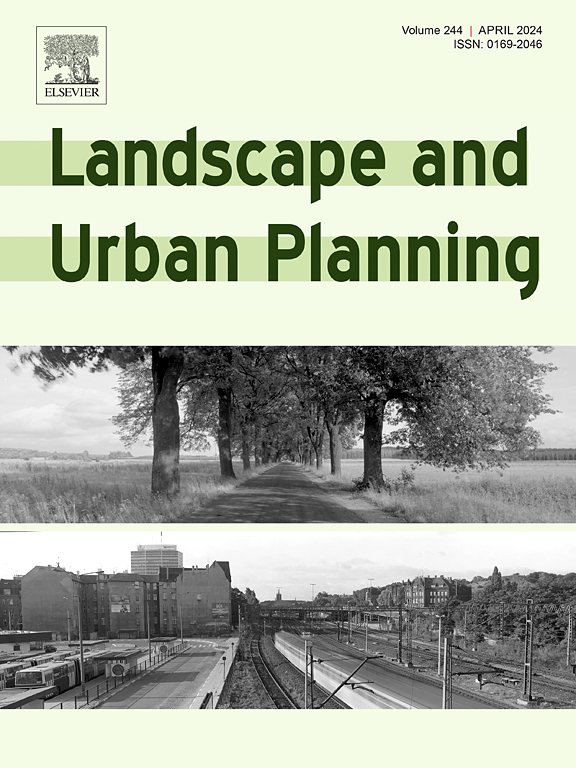可用性是不够的,但访问和使用很重要:评估自然环境与抑郁和焦虑症状之间的关系
IF 7.9
1区 环境科学与生态学
Q1 ECOLOGY
引用次数: 0
摘要
在自然心理健康研究中,很少有研究同时考虑到自然的可用性和访问频率,区分不同类型的绿色和蓝色空间的研究就更少了。本文章由计算机程序翻译,如有差异,请以英文原文为准。

Availability is not enough, but visitation and usage matter: Assessing associations between natural environments and depressive and anxiety symptoms
Background
Few studies have simultaneously considered nature availability and visitation frequency in nature-mental health research, with even fewer distinguished different types of green and blue spaces.
Objective
To assess the pathways linking nature availability and visitation frequency with three mediators to depressive and anxiety symptoms, considering various green and blue space types. We also examined whether income moderated these pathways.
Methods
A population-representative survey of 11,505 adults was conducted in the Netherlands. Respondents self-reported their depressive and anxiety symptoms, and visitation frequency to different types of green and blue spaces. Nature availability was captured based on respondents’ residential neighborhoods. We employed structural equation modelling to understand the theorized pathways.
Results
More frequent visits to all types of green and blue spaces, except lakes, were associated with weaker depressive symptoms through one or more mediators. Residential nature availability was only indirectly associated with depressive symptoms. Green space availability was associated with depressive symptoms through forest visits and subsequently social contact, physical activity, and stress reduction. Associations between blue space availability and depressive symptoms were serially mediated by visits to rivers or beaches and subsequently by physical activity. The results for anxiety symptoms were largely insignificant. Income moderated pathways related to blue space and sports field visits.
Conclusions
Merely having natural spaces in a residential neighborhood may not be sufficient to yield mental health benefits. Instead, the frequency of nature visits and the specific activities therein may play crucial roles. Planning professionals might need to prioritize promoting the visitation and usage of green and blue spaces as part of mental health promotion efforts.
求助全文
通过发布文献求助,成功后即可免费获取论文全文。
去求助
来源期刊

Landscape and Urban Planning
环境科学-生态学
CiteScore
15.20
自引率
6.60%
发文量
232
审稿时长
6 months
期刊介绍:
Landscape and Urban Planning is an international journal that aims to enhance our understanding of landscapes and promote sustainable solutions for landscape change. The journal focuses on landscapes as complex social-ecological systems that encompass various spatial and temporal dimensions. These landscapes possess aesthetic, natural, and cultural qualities that are valued by individuals in different ways, leading to actions that alter the landscape. With increasing urbanization and the need for ecological and cultural sensitivity at various scales, a multidisciplinary approach is necessary to comprehend and align social and ecological values for landscape sustainability. The journal believes that combining landscape science with planning and design can yield positive outcomes for both people and nature.
 求助内容:
求助内容: 应助结果提醒方式:
应助结果提醒方式:


